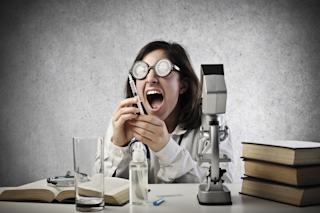There is something irresistible about the connection between brilliance and mental illness. In popular culture, we embrace the wild-haired scientist scribbling equations over every surface — existing on a precipice between virtuosity and insanity. Likewise, we think of artists as tortured souls who must fight their inner demons long enough to produce works of brilliance before ultimately cutting off an ear or falling into a deep depression. Whether there is any truth behind the stereotype has divided scientific opinion for decades.
Perhaps the most widely cited evidence for the link between creativity and mental illness comes from the work of American neuroscientist Nancy Andreasen. In 1987, Andreasen found an increased incidence of bipolar disorder among creative writers and their family members through interviews she conducted at the University of Iowa. Among them was the renowned science-fiction writer Kurt Vonnegut.
A similar study published two years later, based on interviews with ...














